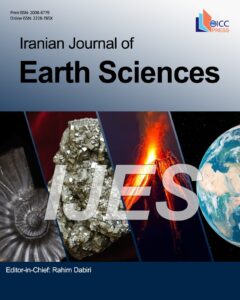Quantification of heavy metals concentration and assessment of Ecological health risk in roadside agricultural land of Dhaka-Aricha highway, Bangladesh
Authors
- Saiful Islam 1
- Mohammad Eusuf Sarker 1
-
Mir Mohammad Mozammal Hoque
*
 1
1
- Mohammad Humayun Kabir 1
- Farah Tasneem Ahmed 2
- Mohammad Nuralam Hossain 3
Abstract
The study quantified the heavy metal contamination, their sources and assessed the environmental risk of roadside agricultural land. Forty-five (45) surface soil samples were collected from fifteen (15) sampling points in Dhaka-Aricha highway (Hemayetpur to Uthali) and examined of heavy metals (Pb, Cd, Cu, Zn, Mn, Fe) using the Atomic Absorption Spectrophotometry (AAS) technique. The six heavy metals of the soil samples were measured in the order of Fe>Mn>Pb>Zn>Cu>Cd. The heavy metal cluster analysis (CA) indicated the common origins and accumulation pathways of Zn, Mn, and Fe from vehicular emission in the roadside soils. CA analysis of sampling sites indicates all three clusters have similar characteristics of pollution from road traffic and industrial settings. Moreover, pollution indices are observed by contamination factor (CF) decrease in order of Cd > Pb > Cu > Zn > Mn > Fe. The geo-accumulation index pattern shows the heavy metal concentrations following the order: Pb > Cd > Cu > Zn > Mn > Fe. Pollution load index (PLI) of heavy metals were increased on the order of Fe < Mn < Zn < Pb < Cu < Cd. All the indexes for the metal under investigation were within the range of low to moderately pollute. The environmental health risk level was estimated based on chronic daily intake (CDI), hazard quotient (HQ), and hazard index (HI) for both adults and children. However, the heavy metals hazard index (HI) exceeded the safe level. The outcome may be useful for observing additional increments of substantial, heavy metal focuses in surface soils along highways.


